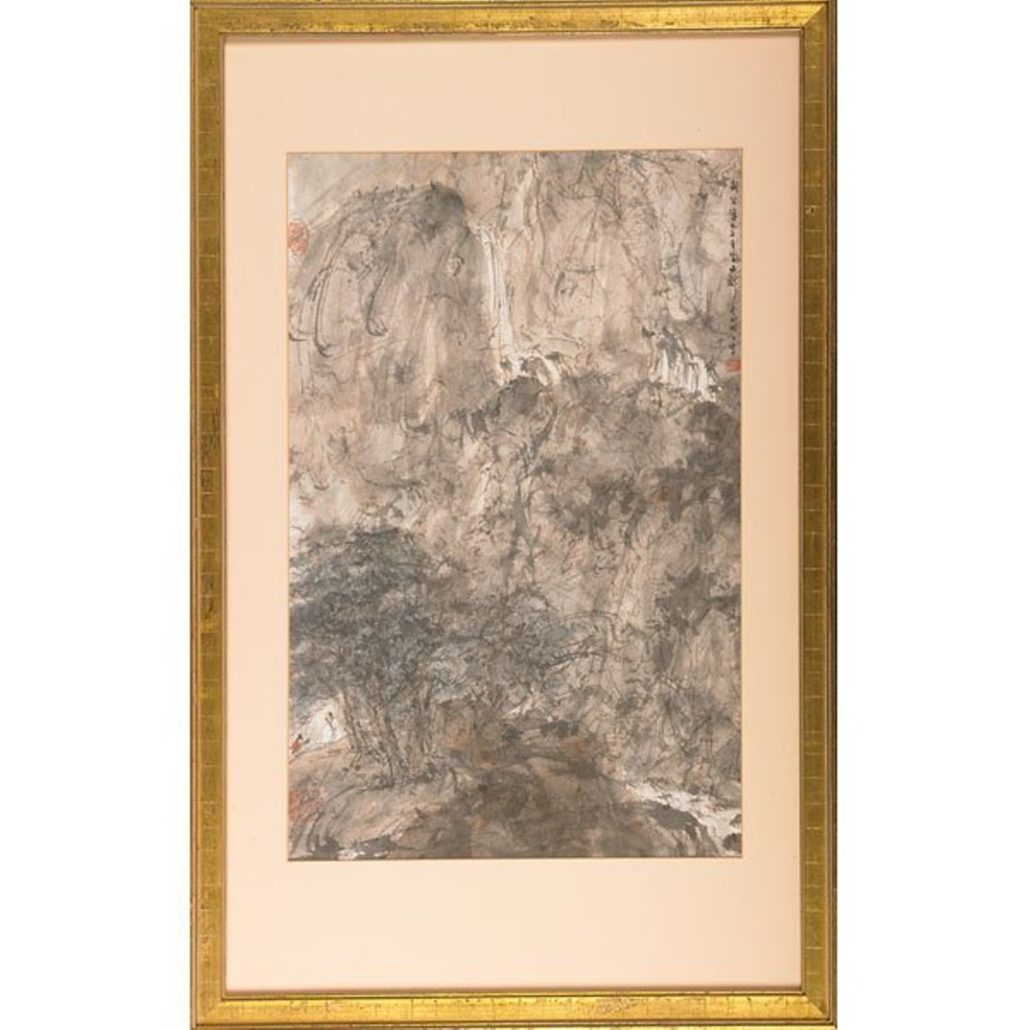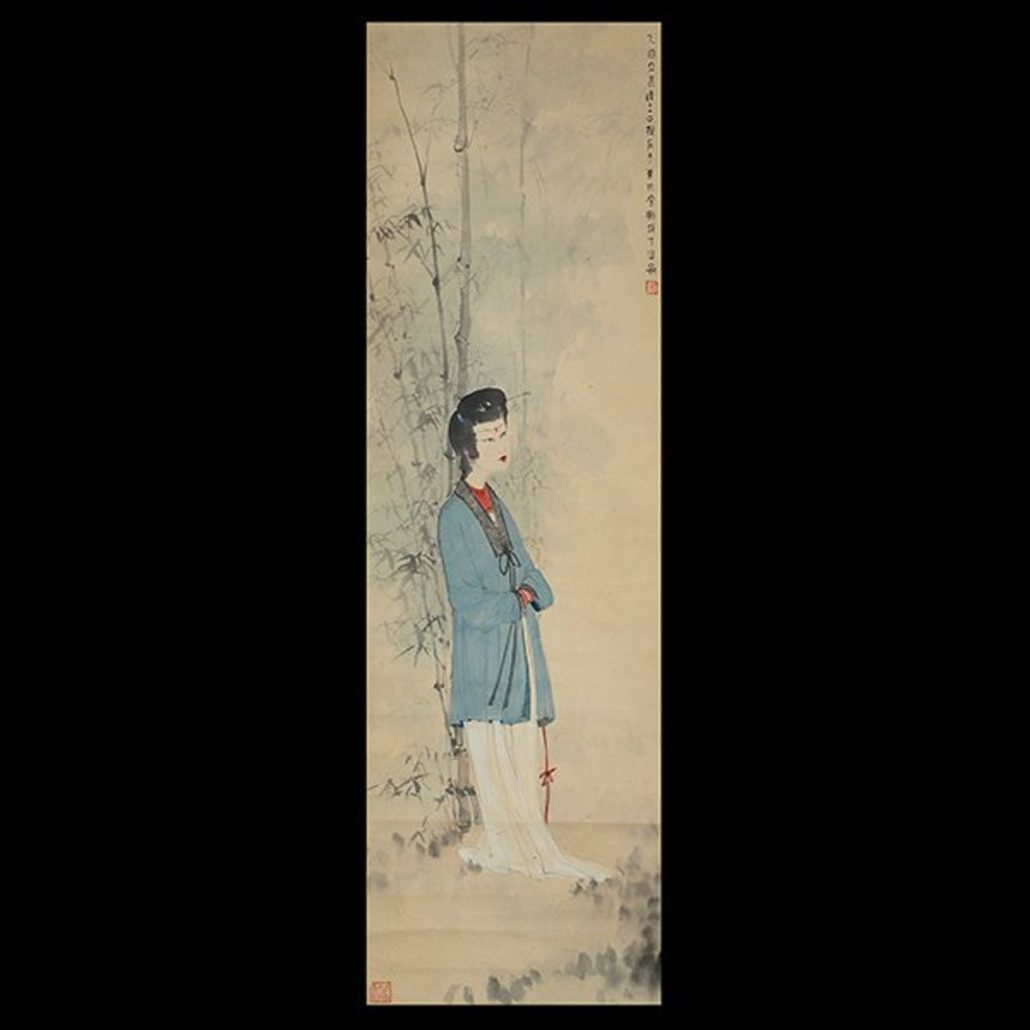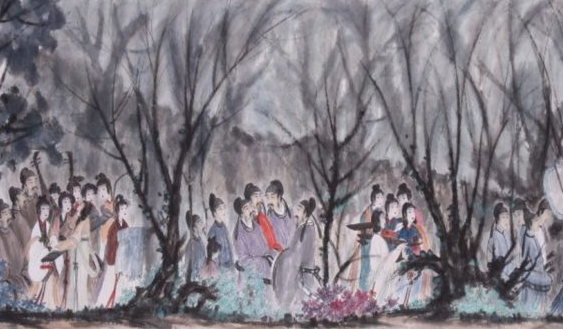
NEW YORK — Fu Baoshi lived through some of the most tumultuous times in China’s history. Born in 1904 in the Jiangxi Province, near the close of the Qing dynasty, his informal art education began in a ceramics shop at age 12. His art is closely tied to China’s politics, and the two stories are deeply interwoven.
Fu was just eight in 1912 when China’s last imperial dynasty was overthrown, signifying the end of the ruling dynasties. He later experienced the disruptive warlord era and Communist rebellion of the 1920s, a deepening conflict between Japan and China, the Communist Revolution and the subsequent establishment, in 1949, of the People’s Republic of China. In the last decade before his passing in 1965, Fu’s art served to reinforce China’s political evolution under Mao Zedong.

Fu Baoshi’s success and the heights to which he brought ink painting are all the more amazing when one considers his humble upbringing. “For somebody who had no formal art school training, Fu excelled in traditional ink-and-brush paintings,” said Mary Ann Lum, co-owner (together with husband Kwong Lum) of Gianguan Auctions in New York City. “The time he spent in Japan opened his horizons. Much like Western art’s pointillism — or the use of small dots of pure color — Fu’s use of dots and splash ink in his landscape paintings created his innovative style. He incorporated Western methods in his realistic paintings using non-traditional layered-over ink-wash brushwork.”

Art and politics were inextricably linked in the artist’s life. “Experiencing upheavals of democratic and communist revolutions, Fu stayed committed to his personal artistry, navigating through political pressure by interpreting his emotions in China’s natural scenery and figures, beyond reproach,” Lum said. “His later monumental works romanticizing communism reflect a personal interpretation as well — drawing inspiration from nature and not emanating from political doctrine. Such spirit is as relevant now as it was in the ’60s.”
The artist is lauded as the most original figure painter and landscape artist of China’s modern period and consequently is regarded as a leading Chinese artist of the 20th century. He revolutionized Chinese painting traditions with his dramatic ink washes, striking use of color and unusual compositions — a clear break from traditional painting, which favored monochromatic themes and calligraphy brushwork. “The groundbreaking and nonconformist Baoshi is also said to have created some of his best work while inebriated, as he felt it kept him emotionally and physically present as an artist,” according to Michaan’s Auctions, which, like Gianguan Auctions, has sold some key works by the artist.

Albert Einstein once quipped, “The Revolution introduced me to art, and in turn, art introduced me to the Revolution.” This seems an especially fitting sentiment when describing Fu Baoshi’s life and oeuvre. He survived many political upheavals in his lifetime, walking a tightrope in satisfying the Communist party’s goals of art serving the state while at the same time creating art that was honest and personal to him. Perhaps the timing of his death — one year before China’s Cultural Revolution — was a blessing as well as a great loss, as many other artists suffered greatly under the new edicts.
# # #



